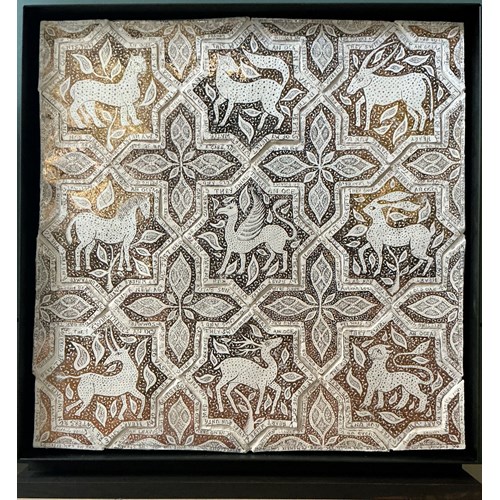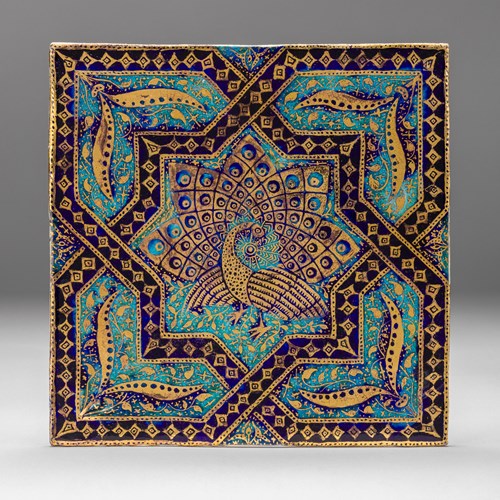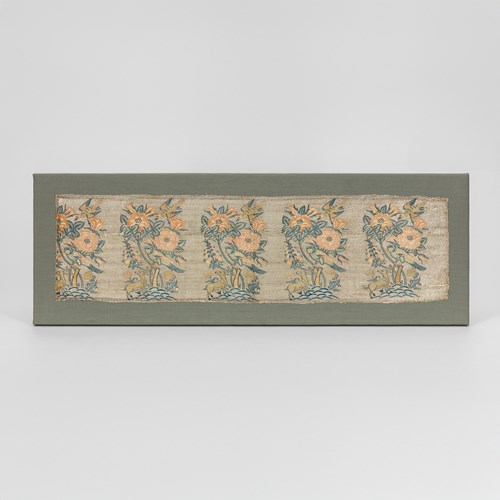Chinese Blue-and-White Ewer Made for the Islamic Market
Epoque Kangxi period (1662-1722), Late 17th – Early 18th century
Origine China
Medium Ceramic
Dimension 28 cm (11 inches)
This ewer of flattened, pear-shaped form is painted and decorated in a violet shade of cobalt blue on a greyish, off-white ground. Each side of the ewer is decorated with four floral sprays and a central tear-shaped floral spray medallion bordered by lappets and a lozenge pattern underneath. The neck with a bulbous drip guard is decorated in stripes and above and below the drip guard are upright and upside-down stiff leaves. The curved S-shaped spout is decorated with cloud motifs and culminates on the end of the spout with a flower-shaped tip. The curved square-shaped handle has hatched bands of painted decoration. The ewer has a metal lid, which is a later addition, probably European, with a fleur-de-lis and an eight-pointed star decoration.
This ewer was made during the Kangxi period (1662-1722) in China; however, both its form and decoration are based on Indian metal prototypes. A 17th-century Indian bronze ewer from North India, in the private collection of Dr Alvin O. Bellak, Philadelphia, USA, has similar decoration to our porcelain ewer specifically with regards to the upright and upside-down stiff leaf decoration on the neck and in the tear-shaped medallion on the sides of the ewer (illustrated in Zebrowski, p. 163, fig. 229). Zebrowski states that the Bellak metal ewer is the ‘finest bronze ewer of this type’ and was initially discovered in Syria, as were many other important Mughal period vessels.[1] This further demonstrates the important trading connections between the Middle East and China, which continued throughout the Mughal period to meet the needs of the growing export market.
See a nearly identical pair of Kangxi blue and white ewers in the Topkapı Sarayı Museum, Istanbul; one of the ewers is published in Krahl, see p. 1007, fig. 2148, Accession Number TKS 15/4680. An iron-red Kangxi ewer in the Topkapı Sarayı Museum, Accession Number TKS 15/3995, shares similar decoration and form with ours; Zebrowski notes that this iron-red ewer was clearly produced for the Mughal market, p. 166. Another similar iron-red Kangxi ewer is in The Victoria and Albert Museum, London, Accession Number 240B&C-1876.
Stock no.: A4906
Epoque: Kangxi period (1662-1722), Late 17th – Early 18th century
Origine: China
Medium: Ceramic
Dimension: 28 cm (11 inches)
Literature: Kerr, R. and Mengoni, L. Chinese Export Ceramics, V&A Publishing, London, 2011.
Krahl, R. and Ayers, J. Chinese Ceramics in the Topkapi Saray Museum, Istanbul: A Complete Catalogue, III, Qing Dynasty Porcelains, Philip Wilson Publishers, London, 1986.
Zebrowski, M. Gold, Silver and Bronze from Mughal India, Alexandria Press in association with Laurence King, London, 1997.
[1] Zebrowski, p. 166
Plus d'œuvres d'art de la Galerie




_T638563983608940170.jpg?width=500&height=500&mode=pad&scale=both&qlt=90&format=jpg)




